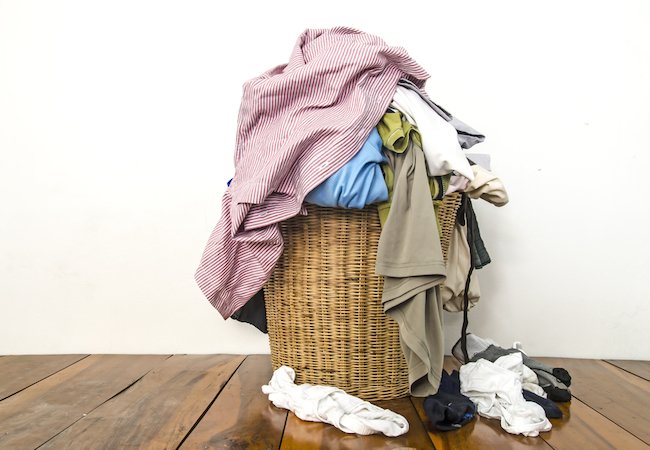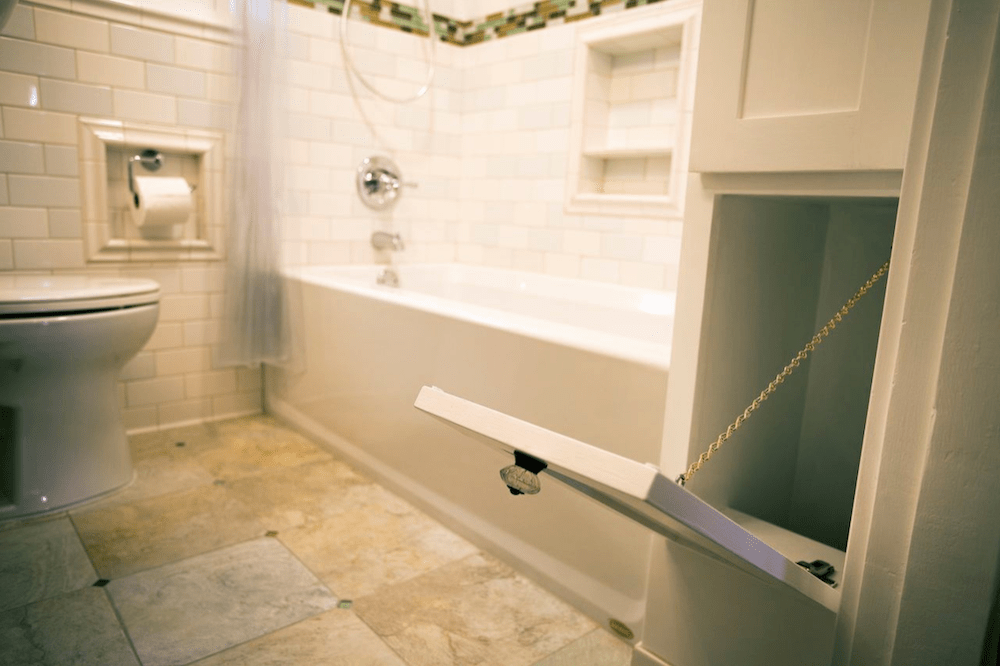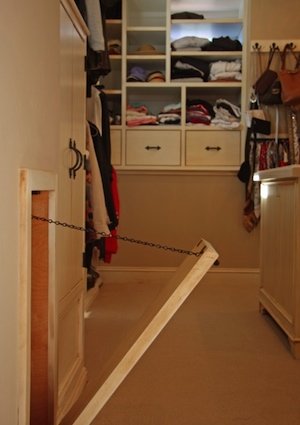

We may earn revenue from the products available on this page and participate in affiliate programs. Learn More ›
Perhaps the most tedious part of doing laundry—itself a tedious chore—is struggling down the stairs with a heavy and cumbersome hamper overflowing with stinky clothes. If you’ve done this on a weekly basis for a period of years, it’s no surprise you’ve neared the end of your rope. The rumors are true: A laundry chute really does make the laundry task less of a hassle, and although installing one is not rocket science, there are a few thing to know before moving ahead.
Build or Buy?
Sometimes it really does seem as though home centers stock literally everything. Believe it or not, you can even buy a laundry chute kit at your local box store. That convenience comes at a cost, though; it’s somewhat cheaper (but less quick and easy) to buy all the supplies separately.
What sort of materials are we talking about? For one thing, there’s the chase—that is, the passage through which dropped clothing travels to the basement (or wherever your laundry area happens to be).
- Usually, contractors and DIY-inclined homeowners build the chase from the galvanized ductwork typically used in home heating and cooling systems.
- Though costlier, large-diameter PVC pipe also works well.
- Wood, drywall, and melamine are additional options, but these latter materials require joints, and with joints you run the risk of snags (the enemy of a successful laundry chute).
Generally speaking, a wider chute is preferable to a narrow one. Shoot for a one-by-two-foot conduit. Fitting a chase of those dimensions entirely behind the plane of your existing walls probably isn’t in the cards. Instead, expect for the chase to punch at least a few inches into the rooms through which it’s going to run. Yes, you’re right—doing that is definitely going to complicate the job!

Location, Location, Location
Real estate and laundry chutes have at least one thing in common: For both, location is of key importance. Certainly, you want to find a place for the chute that’s going to be convenient in your day-to-day life, but the greater challenge is going to be finding a spot where the chase can fit into the framework of your house.
While it’s easy enough to build a laundry chute into a new home or addition, integrating one into an existing house takes some doing. What you need to find is a stud bay that drops to the basement, with neither wiring nor plumbing in the way.
Prepare to cut a few small exploratory holes if you never knew or have forgotten what lies behind this or that wall.
Hallways are often a good bet, especially if their walls run parallel to underlying floor joists. Note that it’s possible for a laundry chute to bend slightly in its run so as to avoid an obstruction, but that bend must be gradual and of course is going to complicate matters.

The Big Drop
The idea of a laundry chute appeals most to those who live in a multistory home. Bear in mind, however, that the risk of a snag increases in direct proportion with the length of the chase. There are worse things in the world than having a sock snag in your laundry chute, but the impetus for building a chute is to minimize hassle, and clearing a snag is nothing if not annoying.
Most homeowners keep a pole or stiff wire on hand to deal with such a problem, but if you’re using a contractor, he or she may be able to design the chase in such a way that it allows for user-friendly maintenance over time.
Kid Stuff
Are there small children in the house? If so, position any upstairs entry doors to the chute high up on the wall, beyond the reach of kids who don’t know better than to send themselves (or the cat) on a ride to the basement. Alternatively or in addition, downsize the door so that no small bodies can fit through. Yet another child-safety option would be to put a lock on the door to the chute.
Fire Safety
Properly designed, a laundry chute provides unobstructed passage between floors. Many people believe that this chimney-like construction has the potential to turn a small fire into a really big and utterly devastating one. On the other hand, many builders and architects point out that stairways carry the same potential risk. And whereas stairways are typically open, laundry chutes are most often closed shut behind doors that can slow a fire’s spread.
Regardless, in some municipalities, there are strict fire codes prohibiting or restricting the construction of laundry chute. Before going ahead with plans, be sure to check with your local building authority.
